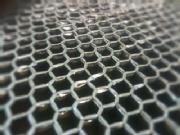WR1
Objectives
This year we are entering Formula Student with the aim of building on the previous team’s success. We have evolved key aspects of the car to ensure we achieve our objective of a UK Top 3 ranking in the 2010/11 competition. This means that we must be both competetive on the track as well as in the static events, which judge aspects of the car such as asthetics, design quality and cost effectiveness.
We have four main objectives for the design of the WR1:
- Simplicity- Keeping the design of the car as simple as possible has many advantages. It makes construction and maintenance of the car easy and intuitive, as well as reducing manufacturing costs. Simplicity also allows the team to ensure that the car conforms to the FSAE rules.
- Lightweight- With a restricted engine, our power output is limited, so weight must be kept to an absolute minimum in order for the car to perform well on the track. We aim to build our car below 180kgs which should help increase our straight line speed and make the car more competitive.
- Reliability– To be competitive at the competition, we aim to complete all dynamic events, thus, the car must be reliable. Having simple designs supports this objective as parts can be easily replaced if they fail. Reliability is also crucial for the “weekend racer” market the car is being designed for.
- Realistic design and manufacturing time– in order to build a reliable car, adequate testing time is vital. We aim to have the car fully completed by the 18thMarch which allows for testing throughout June and leading up to the competition in July.
Chassis
The WR1 used the W10's chassis and package as a base from which to improve on. There was a focus to make the spaceframe lighter, easier to manufacture and more aesthetically pleasing whilst adapting to the new powertrain package. Some parts of the W10 chassis such as the rear structure and the pedal box have remained relatively unchanged.
Suspension
The springs & fox shocks have been carried over from the W10 which are being verified using a shock tester to obtain an accurate damping curve.
Crash Structure
The crash structure has been completely redesigned for the WR1 car. It is made out of layered aluminium honeycomb which provides a significant weight saving compared to the W10 car and the design also has a significantly shorter manufacturing time. The image shows the pre-crushed aluminium honeycomb used for the top layer of the crash structure.
Uprights & Hubs
The uprights and wheels were two areas of the car that were identified for their weight saving potential. The uprights have been extensively modelled and analysed to produce a design which is strong yet lightweight reducing the weight by....... The wheels were made by Force Racing and at 3.4kg per wheel, provide a significant weight saving of 1kg per corner.
Powertrain
In keeping with the design philosophy for the WR1, the powertrain design is centered around reducing weight and creating simple reliable designs. The new KTM engine has allowed for the WR1 to be lighter and more powerful than in previous years. Other design improvements include the development of a pneumatic shifter system and a lower centre of gravity due to a lower placement of the engine.
Engine
Single Cylinder KTM, bored to 590cc, increased compression ratio and converted to fuel injection. Mapped for optimisation with a 20mm restrictor. Capable of around 55bhp.
Drivetrain
Innovative custom chain drive to lockable LSD differential. Custom made tripod CV joints used in conjunction with carbon fibre halfshafts.
